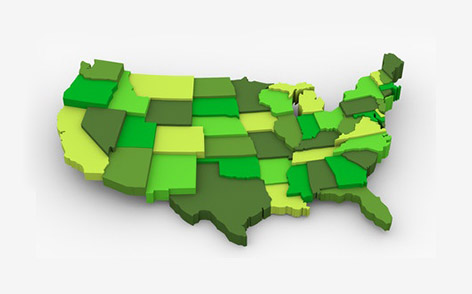Greens applaud EPA for “landmark” HFC ban
11th July 2014 USA: Green group the Environmental Investigation Agency (EIA) has applauded the US EPA for its “landmark rule” to propose bans on high GWP HFCs from 2016.
USA: Green group the Environmental Investigation Agency (EIA) has applauded the US EPA for its “landmark rule” to propose bans on high GWP HFCs from 2016.
Under the proposals, announced yesterday, the commonly-used supermarket refrigeration gases R404A and R507A are amongst a number of refrigerants which could be banned from new and retrofit retail food refrigeration and new and retrofit vending machines, from January 1, 2016. The ban includes stand-alone equipment, condensing units, direct supermarket systems and indirect supermarket systems. R134a and certain other HFC blends will also be banned from use in new stand-alone retail food refrigeration and new vending machines
“The Environmental Investigation Agency applauds the EPA and the White House for taking concrete action to tackle climate change and fulfilling the steps laid out in the president’s Climate Action Plan,” said Mark W Roberts, international policy advisor at the EIA. “Banning the use of dangerous super greenhouse gases like HFCs will help reduce US emissions and send a strong signal to the international community that HFCs can be phased down now.”
The EPA ruling follows the announcement this week from the United States and China reaffirming their commitment to reduce emissions of HFCs bilaterally, and the recent EPA proposed rule approving a number of new “natural” refrigerants for use in the US market.
“The issuing of the two new rulemakings sends a clear message that the US is serious about addressing climate change domestically, as well as internationally.” said Danielle Gagne, HFC and climate policy analyst at EIA.
These rules come at a pivotal time, as the parties of the Montreal Protocol meet this weekend to once again discuss an international phase down of HFCs.
Further reading:
 US could ban R404A from 2016 – July 11, 2014
US could ban R404A from 2016 – July 11, 2014
USA: A number of common HFC refrigerants including R404A and R134a could be banned in certain uses from as early as January 1, 2016, under new proposals put forward by the US EPA. Read more…







